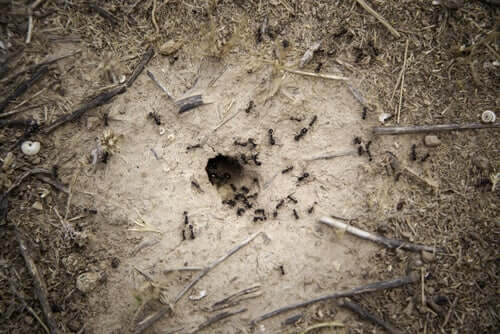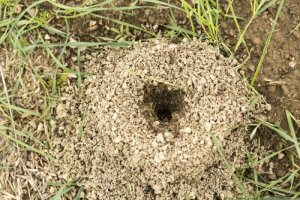Keeping Insects as Pets: Ant Farms

When you think about getting a pet, insects probably aren’t the first thing that comes to mind. People generally think of cats, dogs, or maybe even a rodent. And yet having an ant farm in the house can be a really interesting, educational experience, and requires very little time. If you’ve never kept insects as pets, we’ll tell you why having ant farms can be a great idea.
Keeping ants as pets
Ants are one of the best-known insects around the world. As everybody knows, they form complex societies, with each member of the colony having its own job. However, these colonies usually live underground, and we rarely get to see them in action.
Creating your own ant farm at home allows you to observe these fascinating creatures up close, and watch their society develop. You can see exactly how they build their anthills, and organize their eating and living spaces. As each anthill begins with just a few ants, you’ll even have the chance to see how they reproduce, and watch the larvae develop.
Building your own ant farm at home is cheap and simple. There are specialized stores that sell kits with all the different materials you need to assemble it at home. However, if you’re good with your hands, with the right materials and a little time, you can build your own ant farm and look for the new inhabitants out in nature.
The stores that sell these kits will also provide information on how to take care of your ants. But if you decide to build your own at home, you’ll find plenty of books, forums and websites that will help you learn how to feed and take care of them.
Ant farms – insects as educational pets
Ants can be the ideal pets for kids, or even a whole class of children. They don’t require much care and only need feeding occasionally. The ants do all the cleaning and maintenance work themselves. As caregiver, your job is to observe them and give them a place with the right humidity and temperature levels.
Taking care of an ant farm can be a great experience for children. They’ll get to take part in the whole process: from setting up the ant farm and searching for the ants, to catching them and watching them settle into their new home, to seeing them reproduce and build their society.
This experience will not only teach them about choosing the right materials and building their ant farm, but also will also teach them about responsibility. These little creatures can be looked after by even the youngest members of your family. It conveys the message that all living things are important, not just mammals. The chance to learn more about ants will also help them to appreciate the smallest creatures on our planet.
Ant farms
There are several ways you can obtain an ant farm for your house:
- Order a complete kit from a specialist store.
- Build your own ant farm from scratch using DIY materials.

Regardless of how you choose to obtain your ant farm, you’re going to need the following:
- A container large enough to hold your ant colony. These come in a whole range of different shapes and sizes. At least one of the walls should be transparent so that you can watch the ants at work.
- Sand or earth where the ants can live and dig their tunnels. They prefer damp substrates they can burrow into. In some stores, you may even find special gel substrates specially designed for ants.
- A second container connected to the main anthill. This will serve as a foraging area, where the ants can go in search of food.
- A queen ant.
- Worker ants from the same colony as the queen.
- Decorative elements. Although they’re not strictly necessary, you can add some small decorative items to the foraging area to create a more interesting environment for them. Just make sure they don’t pose a danger to the ants.
- Something to cover the anthill. Ants prefer to be active in the dark, and a lot of light can cause them unnecessary stress.
- A lid to keep your ants in their tank.
Diet
Ants don’t ingest solid foods, preferring more watery substances. So, food such as sugar, honey, or special pastes should be diluted with water.
Ants need protein to live, so it’s important to make sure to give them suitable sources of protein, such as insects, specialist protein syrups, or – in the case of some species – seeds.
Don’t just leave food in the foraging box – make sure to remove any leftovers the following day to prevent it from spoiling and going rotten.
Sunlight is harmful to larvae and pupae. Ant farms should be covered for a certain amount of time every day, and kept away from direct sunlight. In their natural habitat, they live in tunnels underground, where there’s no sunlight at all.
Avoid placing ant farms in very cold or very hot places, like next to radiators or windows.
It may seem weird to have insects as pets, but ant farms can be fun, educational and a great experience for animal-lovers of all ages.